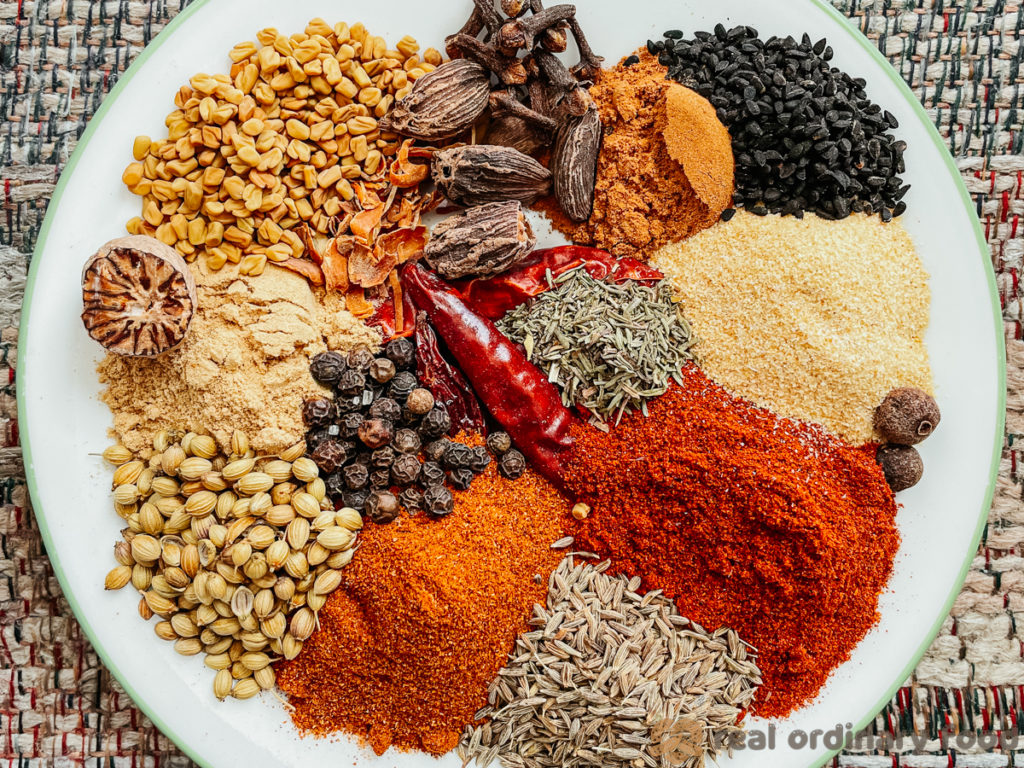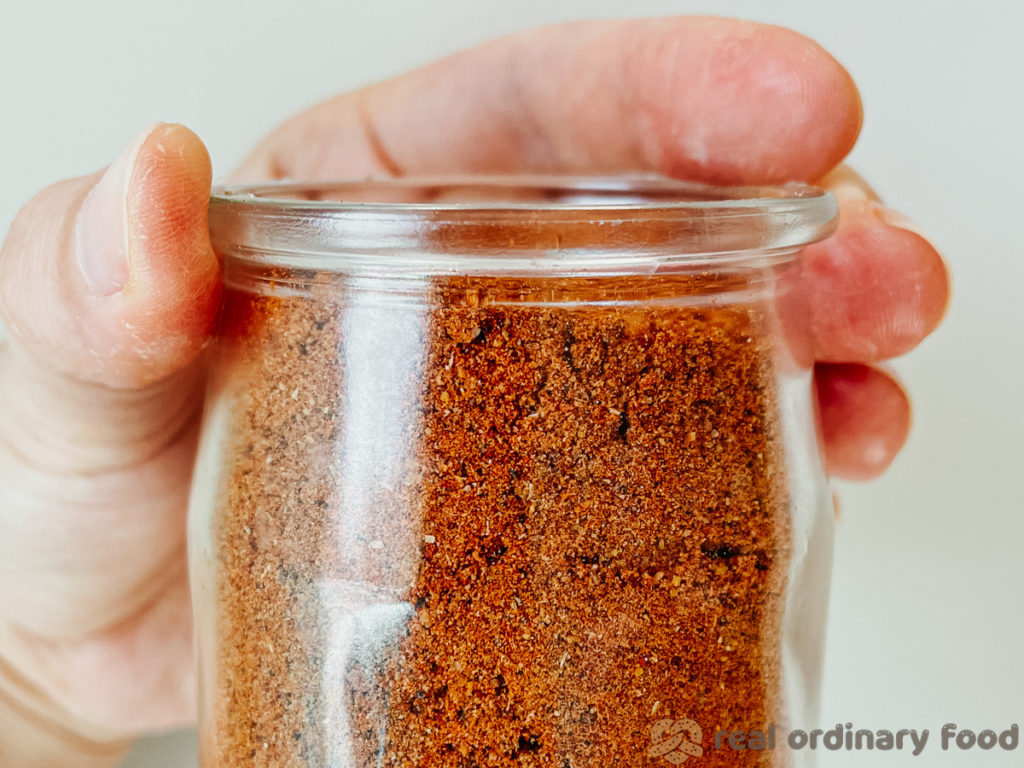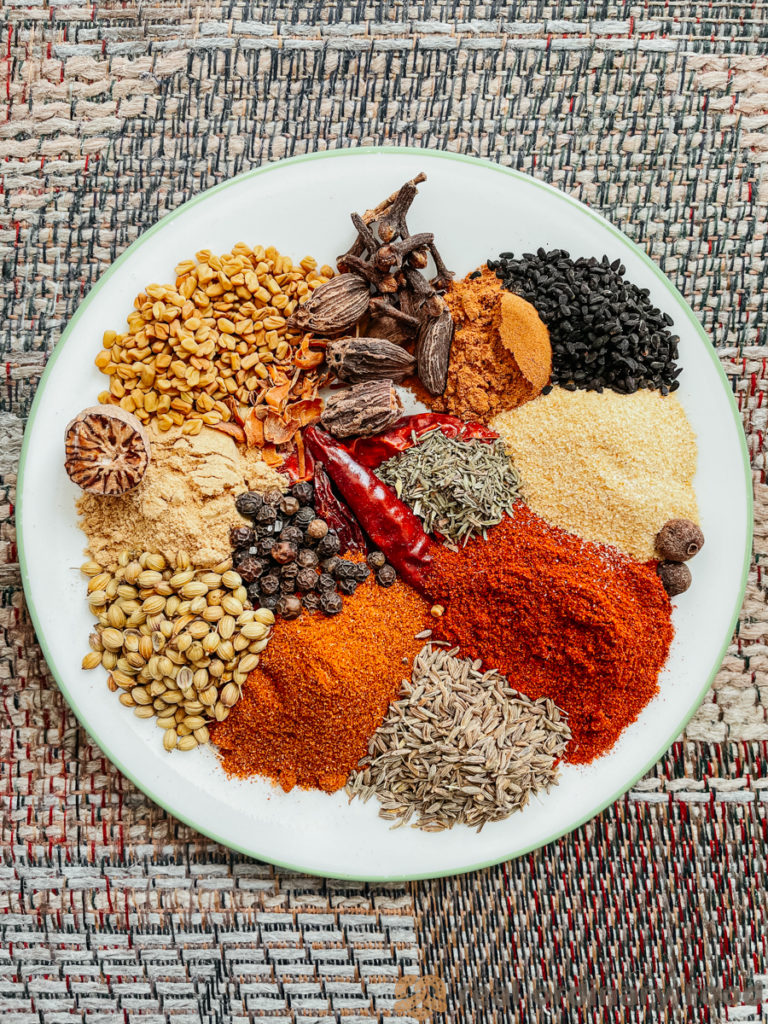Following the introduction of chilis from the Americas to East Africa, berbere spice has become a fundamental component of Ethiopian and Eritrean cooking. Each household has their own formula for this warm and spicy seasoning, but this version features a colourful blend of traditional ingredients that you can’t go wrong with. (Don’t worry if you’re missing a couple of the ingredients on the list; you’ll end up with a delicious spice mix even if you leave some of them out!)

Capsicum and Fenugreek
According to Plant Genetic Resources of Ethiopia edited by Engels, Hawkes, and Worede, red pepper is the most essential and widely used spice in Ethiopia, and of course it forms the base of berbere seasoning. In fact, the Amharic word for chili pepper is በርበሬ or berbere!

Although every cook has their own unique blend, the critical ingredients that make a berbere a berbere are chili (Capsicum annuum) and also fenugreek (Trigonella foenum-graecum).
As Loizzo et al. write in the International Journal of Food Sciences and Nutrition, “the combination of fenugreek and red pepper is essential to Berbere; while one or two of the other ingredients may be left out, the fenugreek and red pepper are must-haves.”

FAQ
In traditional Ethio-Eritrean cooking, berbere is used to flavour a variety of saucy stews called wots or tsebhi, such as misir wot (lentil stew) and shiro wot (ground pea stew) which are then eaten together with injera, a fermented flatbread. It’s also used to flavour an Eritrean tomato sauce called silsi.
As a dried spice blend, it’s technically safe for eating indefinitely, but it will start losing its flavour in a few months. It’s best to finish it within half a year. If you’re worried about not using it up in time, you can also throw it in the freezer, where it will stay potent for years.
You can use this spice blend in many non-Ethiopian/non-Eritrean recipes as well, and even as a replacement for regular chili powder. It works as a seasoning for these roasted cashews, or in place of the spices in this borani banjan (eggplant casserole) recipe. In Eritrea it’s also quite popular to add berbere to tomato sauce, for use in pastas, salads, etc.
Recipe Card

Traditional Berbere Spice Blend (በርበሬ)
Use Imperial/Metric buttons below to toggle between volume vs weight measurements. I recommend weighing out your ingredients for best results.
Ingredients
- 5 dried red chili peppers 5g
- 2 tbsp smoked paprika 15g; see
Note 1 - 1 tbsp paprika 7g; see
Note 1 - 1 tbsp ground dry ginger 6g
- 1 tbsp fenugreek seeds 7g
- 5 korarima pods or 2 tsp powder 3g *can sub black cardamom
- 2 timiz 4g *can sub 2 tsp black pepper
- 7 whole cloves
- 2 allspice berries
- 1 tsp coriander seeds 1g
- 1 tsp garlic powder 3g
- ½ tsp cumin seeds 1g
- ½ tsp nigella seeds 1g
- ½ tsp ground cinnamon 1g
- ½ whole nutmeg 1g
- ½ tsp dried thyme
- ½ tsp mace
Instructions
- Optional: Toast the whole spices in a dry saucepan on low heat for a couple of minutes.
- Add all the ingredients to a spice grinder or high-speed blender and blend until finely ground.
Nutrition
Recipe Notes
- If you would like a hotter berbere, swap out the paprika with more dried chili pepper.
- The ingredients are listed in order of importance. If you don’t have some of the items near the bottom of the list (particularly the ones that are only 1 or 1/2 tsp), feel free to leave them out.
Did you make this recipe? Please consider leaving a rating below to let me know how you liked it.
You can also take a picture and tag me on Instagram @earthtoveg, I will shout you out in my Stories!
Nutrition, Cost, and Emissions Information
One full batch of homemade berbere spice blend costs $1.20 and makes 8 tablespoons, each containing 22 cal and releasing 6 gCO2e of carbon emissions into the atmosphere.
To reach the global Paris Agreement emissions target, it’s recommended to limit daily carbon emissions from food to 3,050 kgCO2e/day per person.
Nutrition data is provided by Cronometer (click the link at the bottom of the nutrition label to learn more). Feel free to contact me for sources on the cost and carbon emissions information presented here. I am not a nutritionist and guidelines on this page are provided for informational purposes only.

We absolutely love Ethiopian food and this stuff is exactly what I’m looking for. can you post some recipes with it??
Hey Norman, glad you found the post helpful! I’m getting close to publishing recipes for misir wot and shiro wot which both use berbere, stay tuned 🙂